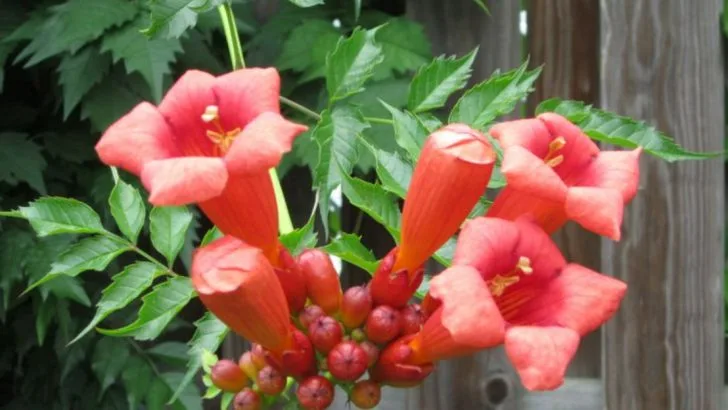Some climbers fill the summer air with perfume so powerful, it feels like magic. Others? They promise fragrance but leave you with nothing but disappointment. If you want your garden to sing sweet scents all season long, knowing which vines deliver is everything. We’ve gathered 7 showstoppers that’ll have your neighbors sneaking over for a sniff. But beware—5 others just flop, failing to fill your summer days with any charm at all. Get ready to climb into a world of intoxicating aromas and dodge the scentless letdowns.
Jasmine
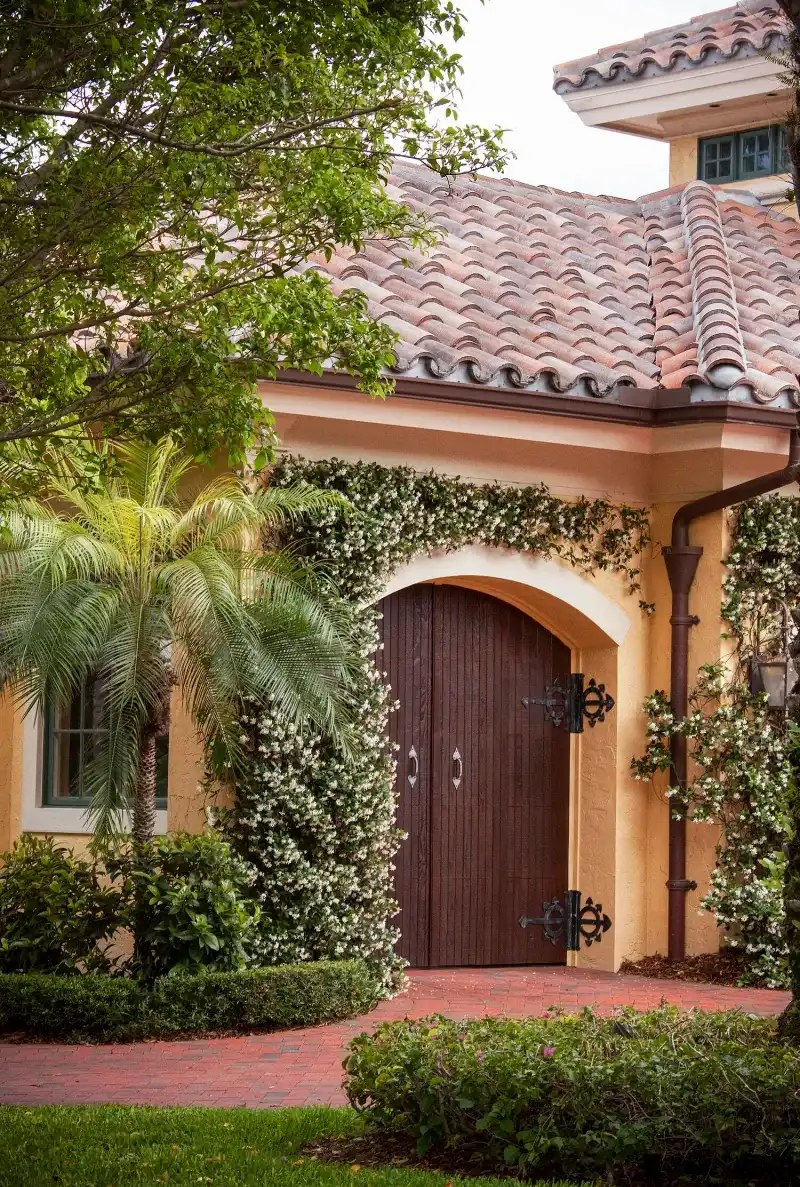
Jasmine is the quintessential fragrant climber, its scent reminiscent of warm summer nights. Traditionally grown along fences or pergolas, its starry white blooms release a captivating aroma that intensifies in the evening. Perfect for a garden near seating areas, jasmine promises a sensory experience. Its vigorous growth can quickly cover unsightly walls or trellises.
However, jasmine requires regular pruning to prevent it from becoming unruly. Its delicate flowers belie a robust nature, thriving in sunny spots with well-drained soil. A symbol of love and beauty, jasmine has been cherished across cultures.
Honeysuckle
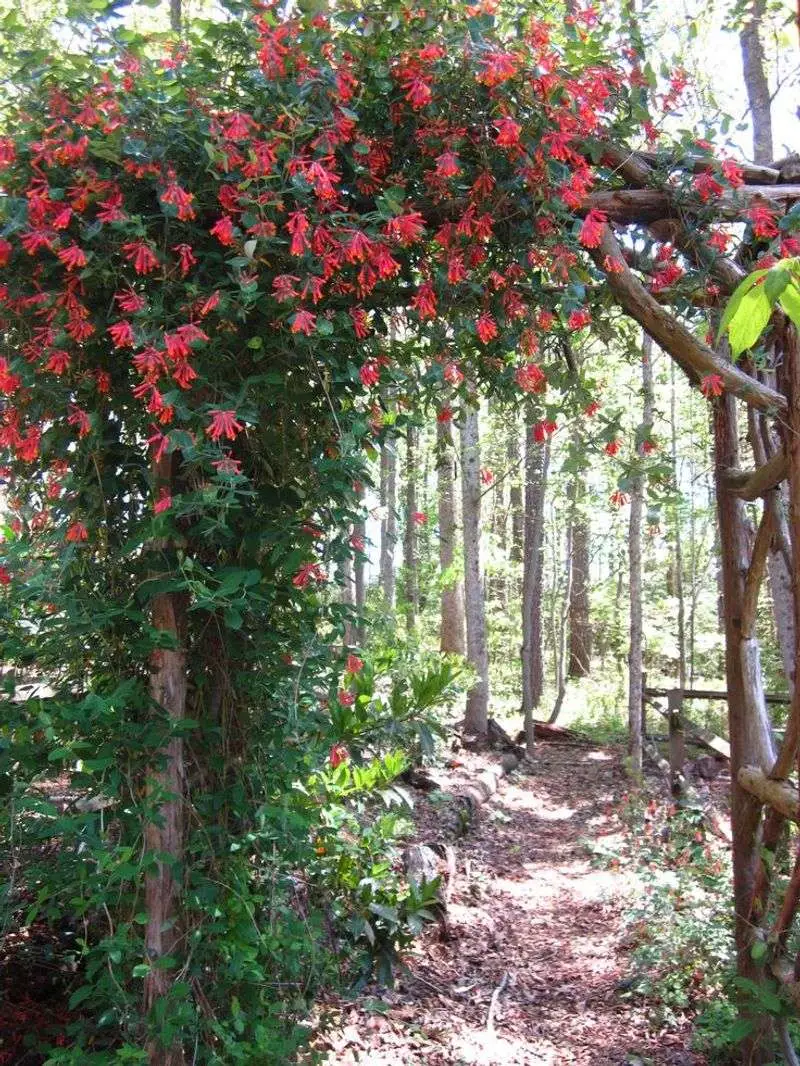
Honeysuckle enchants with its sweet, nostalgic fragrance and vibrant blooms. These tubular flowers, often in shades of red, yellow, or pink, attract bees and hummingbirds, adding life to any garden. The scent, strongest at dusk, evokes memories of childhood summers.
Growing honeysuckle requires support structures like arches or trellises, and they perform best in well-drained soils with some sun exposure. While they can be invasive if unchecked, their charm and scent make them a favorite choice for gardeners seeking a lively, fragrant addition.
Rose

Climbing roses bring a classic elegance to gardens, offering not only visual beauty but a delightful scent that varies from sweet to spicy. Their blooms, ranging in color, can transform fences, walls, or arches into floral masterpieces.
Caring for climbing roses involves regular pruning to encourage healthy growth and flowering. They prefer sunny spots and fertile, well-drained soils. Roses have been symbols of love and beauty for centuries, making them a timeless choice for gardeners seeking tradition and fragrance.
Wisteria
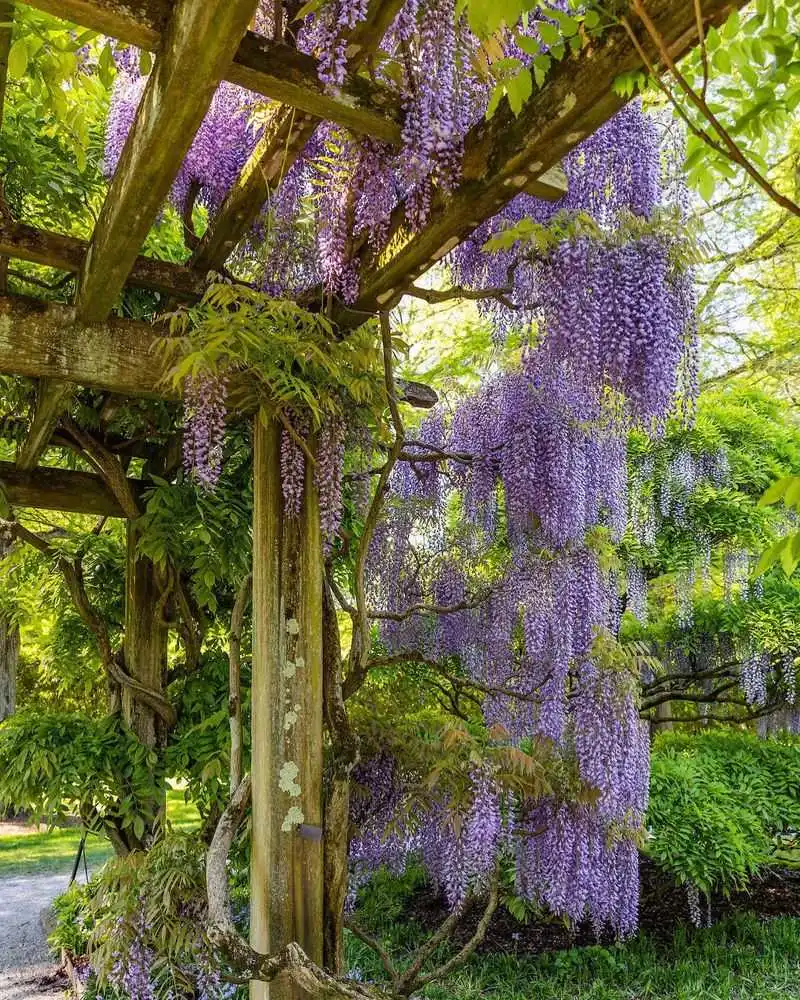
Wisteria captivates with its pendulous clusters of lilac or white flowers that create a breathtaking sight in spring. Its sweet fragrance is an added allure, making it an ideal choice for pergolas or garden arches.
While stunning, wisteria demands patience, as it may take years to bloom. It thrives in full sun and requires support to manage its vigorous growth. With origins in Asia, wisteria carries a sense of exotic elegance, rewarding gardeners with its spectacular floral display and scent.
Sweet Pea
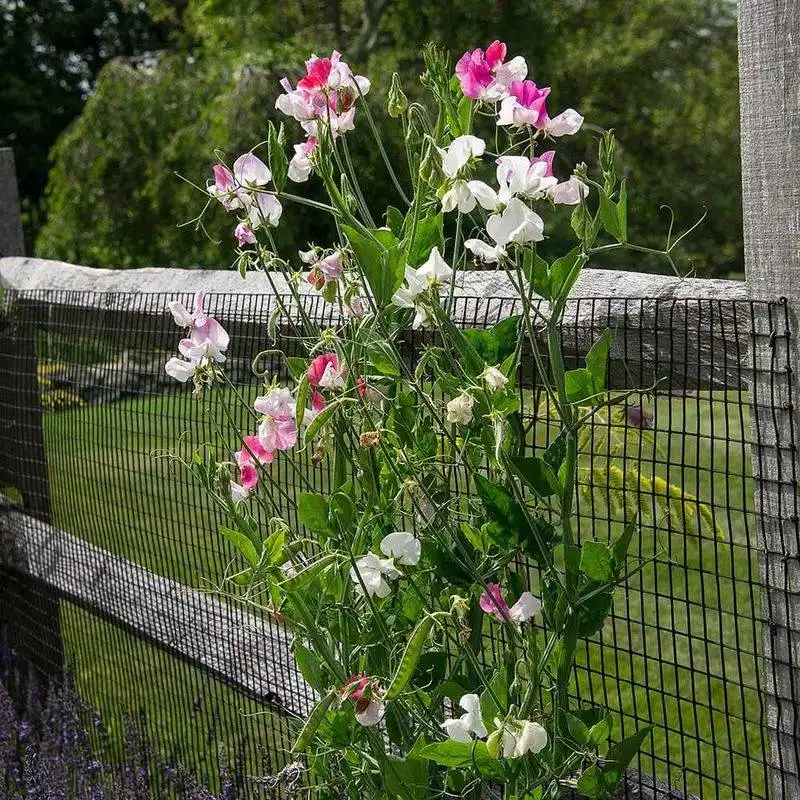
Sweet peas are cherished for their enchanting fragrance and dainty blooms in a pastel palette. Ideal for cutting and displaying indoors, their scent fills the air with a sweet, floral fragrance.
Growing sweet peas involves choosing a sunny spot with rich, well-drained soil. Regular deadheading encourages prolonged blooming. As annuals, they offer a seasonal burst of color and scent, bringing a touch of nostalgia and simplicity to gardens, reminiscent of English cottages.
Clematis
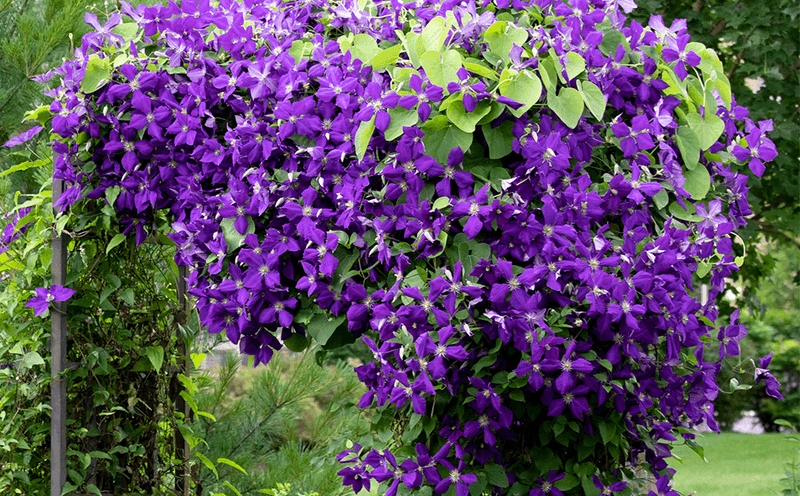
Clematis offers a diverse range of varieties, each bringing unique colors and scents to the garden. Known for their large, showy flowers, some clematis varieties also emit a mild, pleasant fragrance.
This climber thrives in sunny conditions with well-drained soil, but appreciates shaded roots. Regular pruning is essential to manage its growth and ensure plentiful blooms. Clematis’ variety ensures it can complement any garden style, from modern to cottage, adding intricate beauty and subtle scent.
Star Jasmine
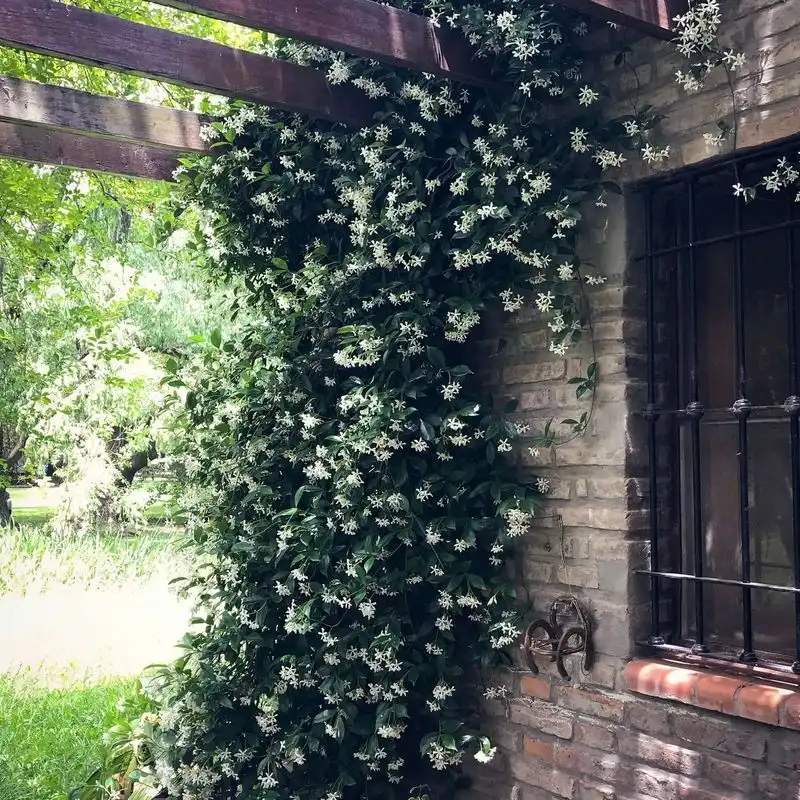
Star jasmine lives up to its name with starry white blooms that release an intoxicating scent, most noticeable in the evening. This evergreen climber adorns walls and fences, providing year-round beauty.
Preferring full sun and well-drained soil, star jasmine is hardy and low-maintenance once established. Its glossy foliage adds visual interest even when not in bloom. Originating from Asia, it brings exotic charm and a powerful fragrance to gardens, making it a popular choice for sensory garden spaces.
Trumpet Vine

Trumpet vine, with its bold, trumpet-shaped flowers in vibrant orange or red, is visually striking but can disappoint in scent. While not fragrant, it attracts pollinators like hummingbirds, adding movement to gardens.
This climber is hardy and fast-growing, requiring sturdy supports and regular pruning to control its spread. Though lacking fragrance, its vivid blooms and wildlife appeal make it a valuable addition for those prioritizing visual impact over scent.
Boston Ivy
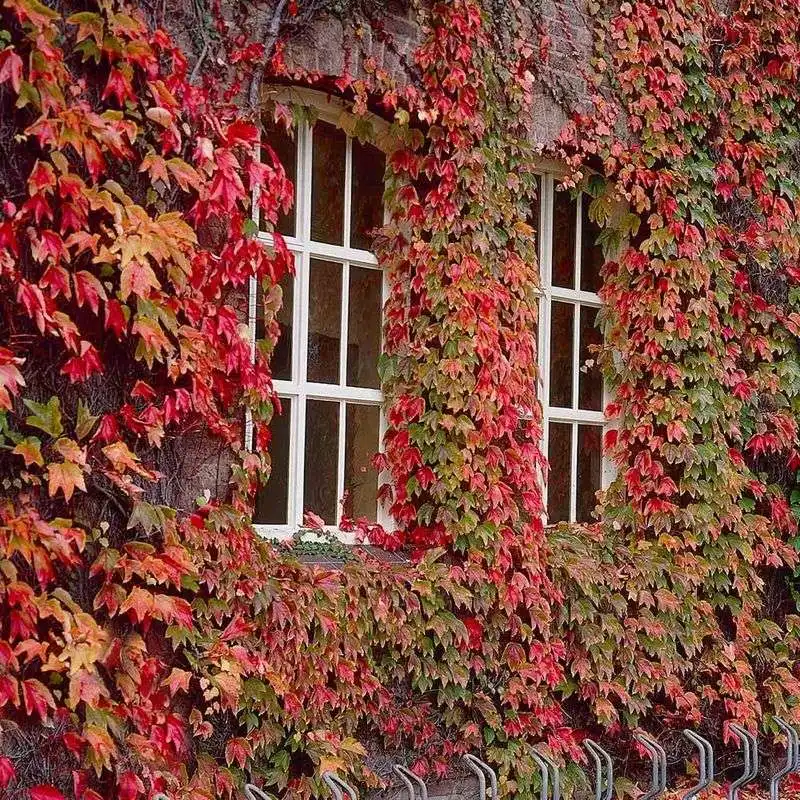
Boston ivy is renowned for its vibrant green leaves turning fiery red in autumn, yet it lacks the floral scent that some might expect. Its primary charm lies in its foliage and ability to cover large areas quickly.
Ideal for buildings or large walls, Boston ivy creates a lush, green facade that changes with the seasons. Though not fragrant, its seasonal color transformation and low maintenance requirements make it a popular choice for urban landscapes.
English Ivy
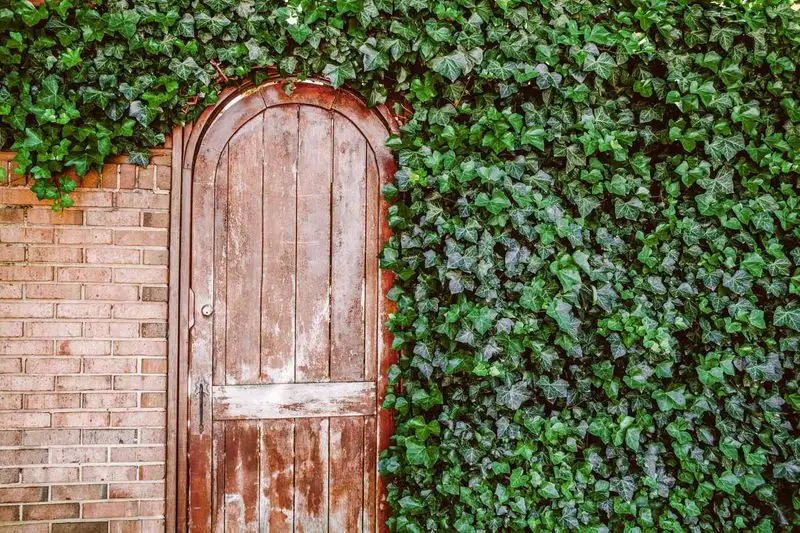
English ivy is a classic climber, known for its dense, evergreen foliage rather than floral scent. It’s often used to create green walls or cover unsightly structures in gardens.
This hardy plant thrives in various conditions, from full sun to deep shade. Its lack of fragrance is offset by its ability to insulate buildings and provide habitat for wildlife. English ivy’s timeless appeal makes it a staple in traditional gardens, despite its non-fragrant nature.
Virginia Creeper
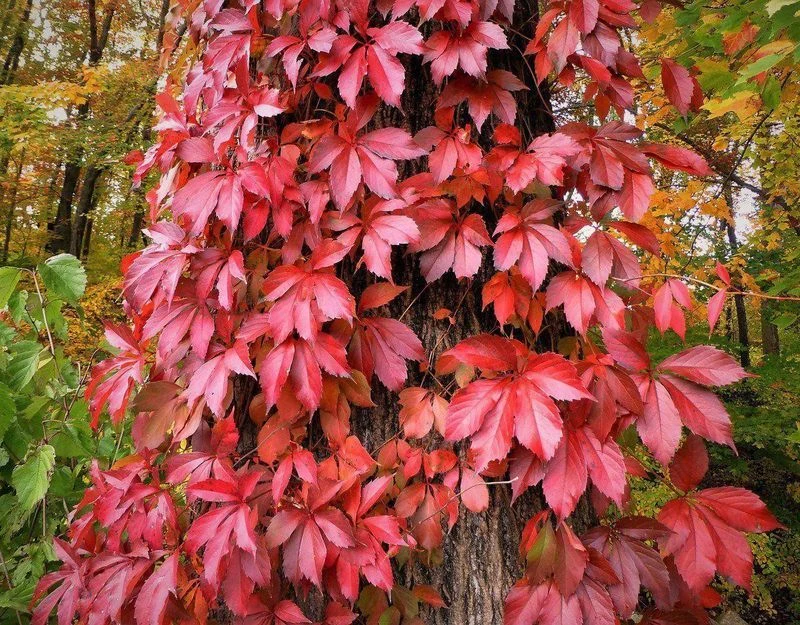
Virginia creeper is valued for its dramatic foliage, which changes color with the seasons, yet it does not offer floral fragrance. Its fast-growing nature makes it ideal for quickly covering fences or walls.
Though not known for scent, Virginia creeper’s seasonal beauty and ability to thrive in various conditions make it a versatile choice. Its autumnal transformation adds striking color to gardens, compensating for the lack of fragrance with visual appeal.
Porcelain Berry

Porcelain berry’s appeal lies in its striking, multi-colored berries rather than its lack of scent. The vibrant blue, purple, and green berries attract visual interest and wildlife in late summer and fall.
This vigorous climber requires support and regular pruning to manage its growth. While it may not perfume the air, its aesthetic appeal and ability to draw birds make it an interesting addition to gardens focused on biodiversity.

